Bernard Arnault – ‘Paris is booming’
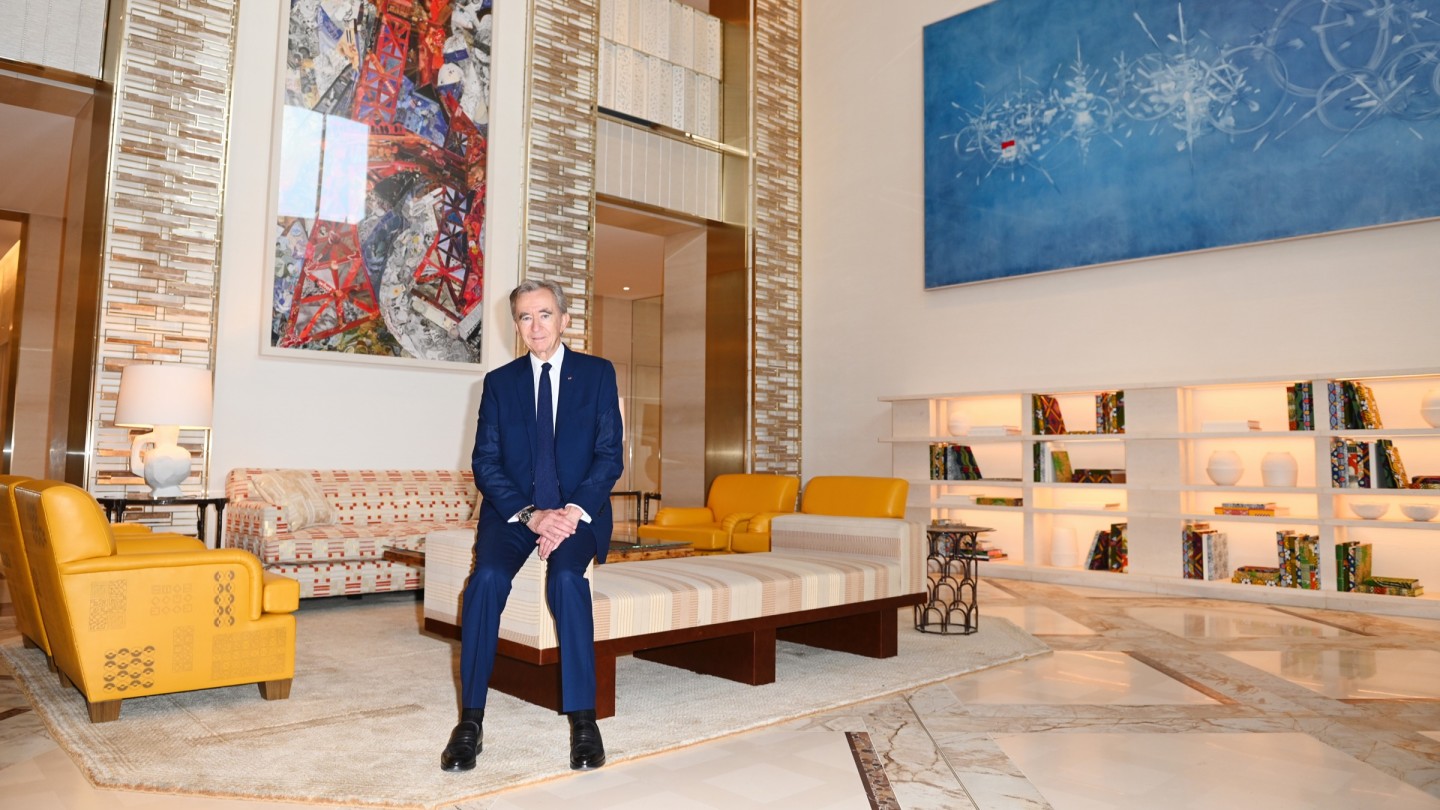
Roula Khalaf, Editor of the FT, selects her favourite stories in this weekly newsletter.
When I ask Bernard Arnault what his primary concern is about the Cheval Blanc – the hotel that forms part of his €750m redevelopment of the Samaritaine building in central Paris – his answer is typically emphatic. He wants it to be “the best”.
“Best” is a favourite word of the chairman and chief executive of the LVMH group. It punctuates his every sentence. It is also the standard by which he compares the 75 brands in the LVMH stable, including the fashion houses Dior, Givenchy and Louis Vuitton and the drinks brands Moët & Chandon, Hennessy and Château d’Yquem (the last dates back to 1593). It also includes the suitcase maker Rimowa, acquired in 2016, the fine-jewellery brand Bulgari and the watchmaker TAG Heuer. He expects each to be the best.
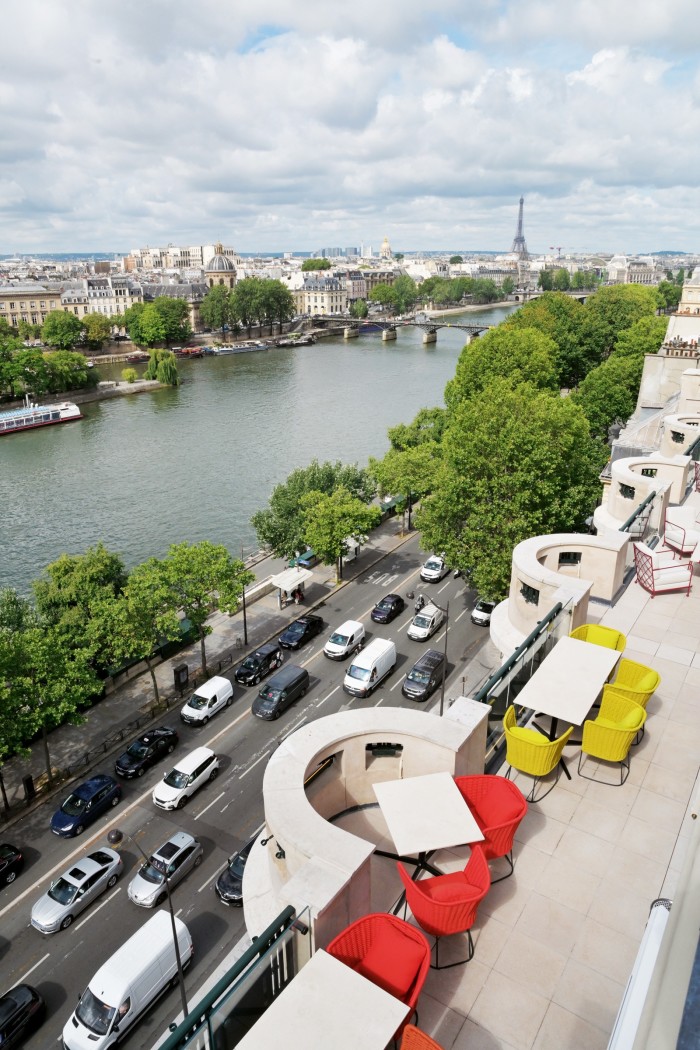
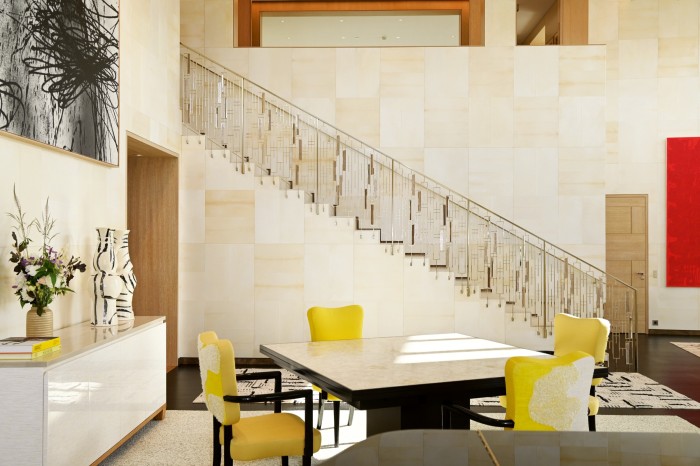
The Cheval Blanc brand began life in Courchevel in 2006 as a boutique, seasonal 34-room ski resort. It now consists of five properties, including this new Paris outpost in the deco section of the landmark building on the Seine. The project has been 15 years in the making and marks a city debut for the hotel group better known for exotic faraway locales. It’s an interesting development for LVMH, which also acquired Belmond in 2019 for $3.2bn. Is this Arnault’s bid to conquer the hospitality market? Or simply to become the best hotelier in the world?
“The goal is not to do a big chain with Cheval Blanc,” says the 72-year-old over breakfast. A slight, 6ft presence with a looming statesmanlike authority, Arnault arrived at the hotel for our appointed meeting at exactly 8.30am. “We don’t need to be a group with 50 hotels. We want to concentrate on being the best – to have the best location, the best team, the best interior design, the best architecture. And this takes time. We are not in any rush.”
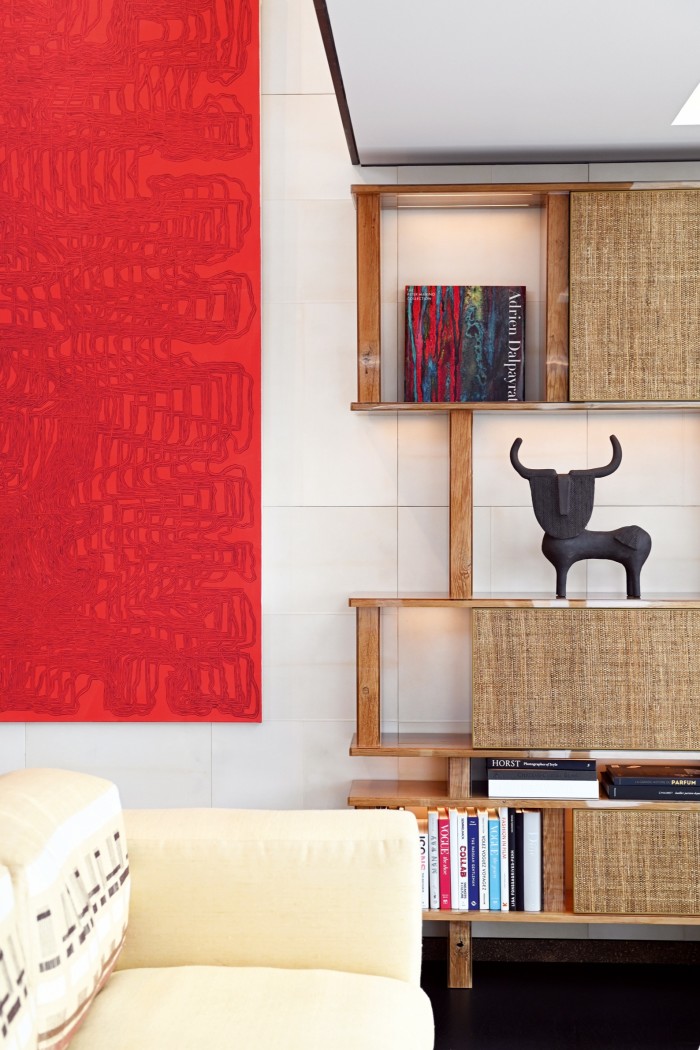
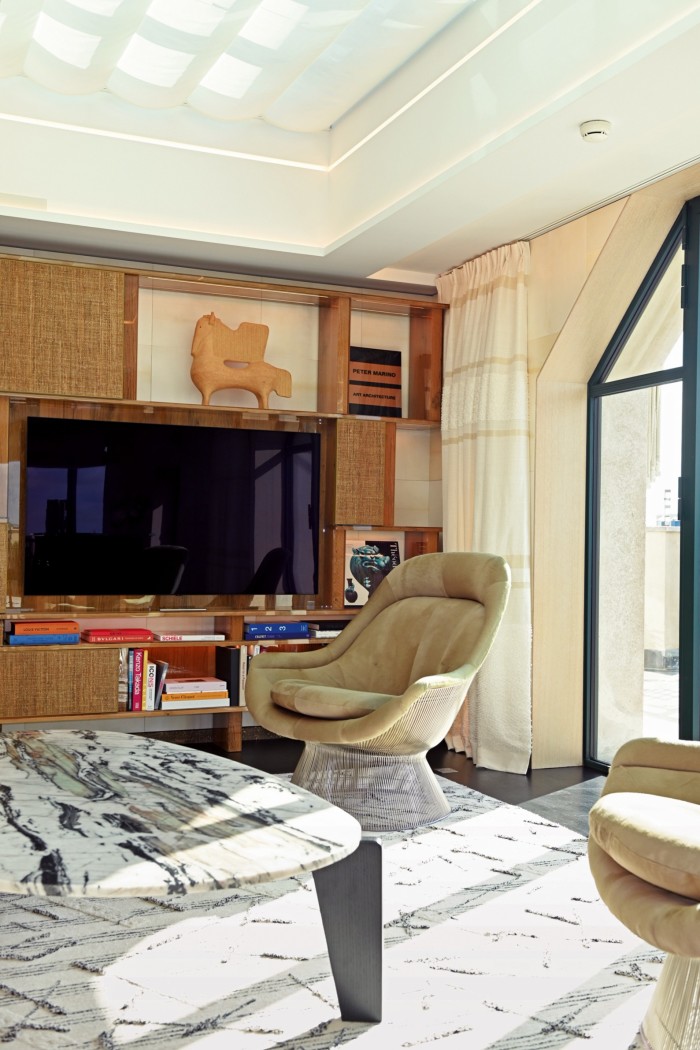
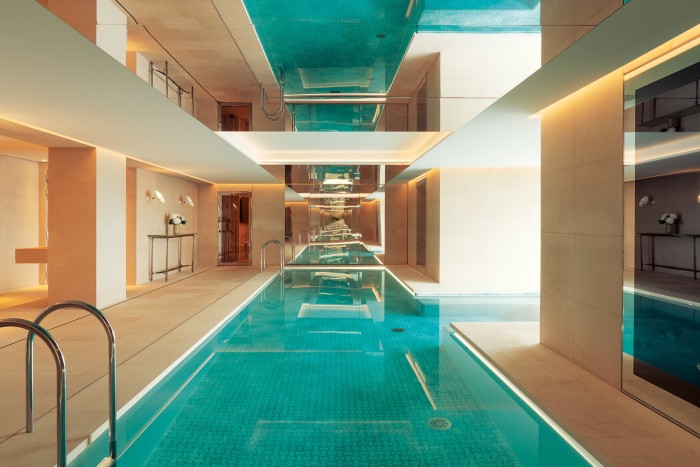
La Samaritaine was founded by Ernest Cognacq as a small apparel shop in 1870, and expanded over the next few decades to become the sprawling temple to art nouveau and art deco – as well as commerce – it is recognised as today. After safety issues were discovered in the building, and decades of financial losses, the store was closed in 2005: five years later LVMH took full control. It was only while redeveloping the original department store that Arnault was inspired to build a hotel on the Seine side of the building when he realised that its greatest asset was its uninterrupted views.
The completed Cheval Blanc opened in early September following months of Covid-19 delays. It has 72 suites, four restaurants and a spa, with suites costing from €1,150, but today Arnault is unveiling the hotel’s most exclusive residence: a 1,000sq m apartment incorporating seven bedrooms, a vast living area, marbled bathrooms and a private gym. Called The Apartment, it will cost tens of thousands per night.
The Apartment has secure and independent street access, a team of dedicated staff ready to tend to every ministration, and – the kicker – a substantial private pool. The hotel already has a guest pool in its basement, surrounded by a dazzling video map conceived by the artist Oyoram. By contrast, the apartment’s aquatic facility is more modest, but it does boast a picture window through which bathers can admire the Sacré-Coeur. The apartment, like the hotel and a vast number of other LVMH-owned buildings, was designed by the architect Peter Marino and it contains an inventory of museum-quality artworks. A James Siena painting, Ssonsunurrhth, hangs in the library, alongside a sculpture, Bull, by William Byl. The living suite is furnished with a Steinway grand piano – Arnault is himself an accomplished player, and his second wife, Hélène Mercier, is a concert pianist (she sometimes plays with her sons Alexandre, an executive vice president at Tiffany and Chopin enthusiast, and Frédéric, CEO of TAG Heuer and the fourth of Arnault’s five children). In the apartment dining room, an abstract painting, T1989-L42 by Hans Hartung, hangs over a row of citrine-yellow chairs. A gilded guardrail of flowers unfurls along a stairwell: commissioned in addition to a loveseat and two sculptures, Arnault explains proudly, it represents some of the final work undertaken, in 2018, by the artist Claude Lalanne.
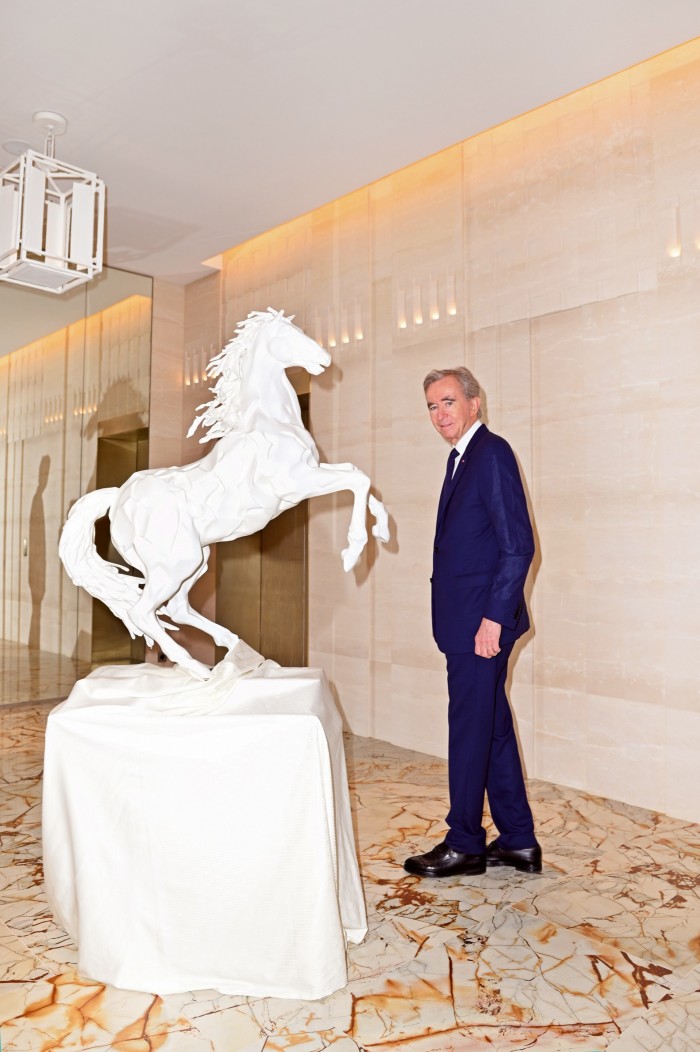
The deco details such as the window casements, which were all listed, have preserved the building’s historic integrity, while the prestigious furnishings lend everything a just-so, very contemporary air. “We asked Peter Marino to design the inside as though it were a private home,” says Arnault of the light-filled decor. “And you can see that in the rhythm of the rooms. You may have, also, access to the top terrace, where you can do cocktails and other things. I think it is the best experience in town.”
Arnault stands suddenly. “We should go on the terrace for one minute.” He leads me to a spacious terrace revealing a 360-degree panorama that shimmers under a blue sky hung with perfect cumulus clouds. Here is Paris delivered in a cinematic landscape where the Bastille, the Seine, the Louvre and Montmartre are laid out in one great gulp of Stendhal-inducing wow.
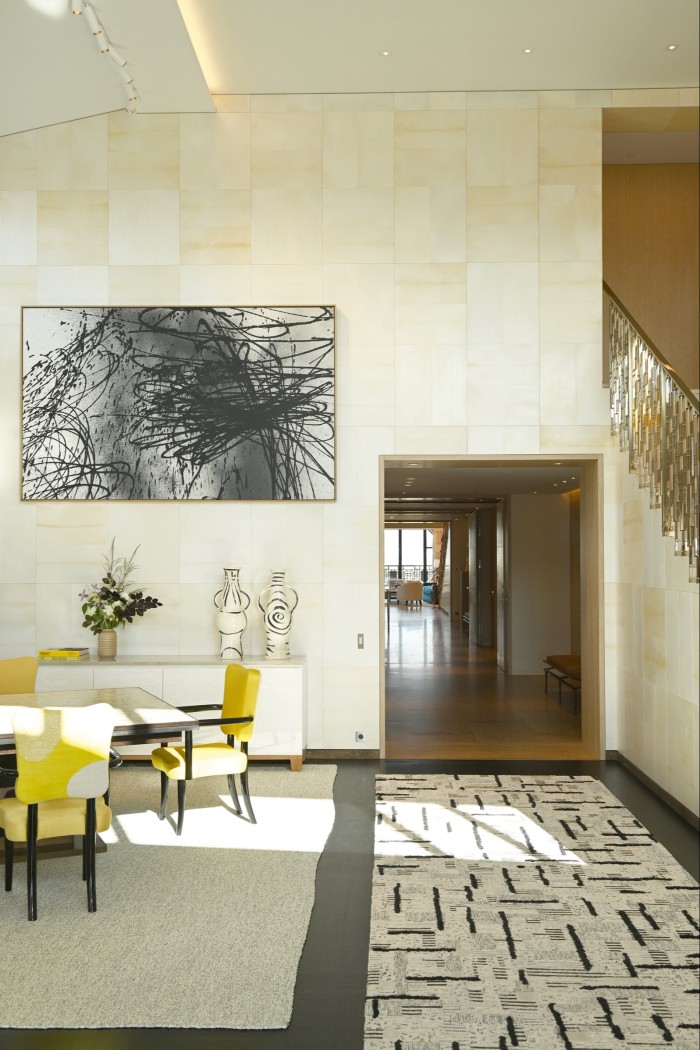
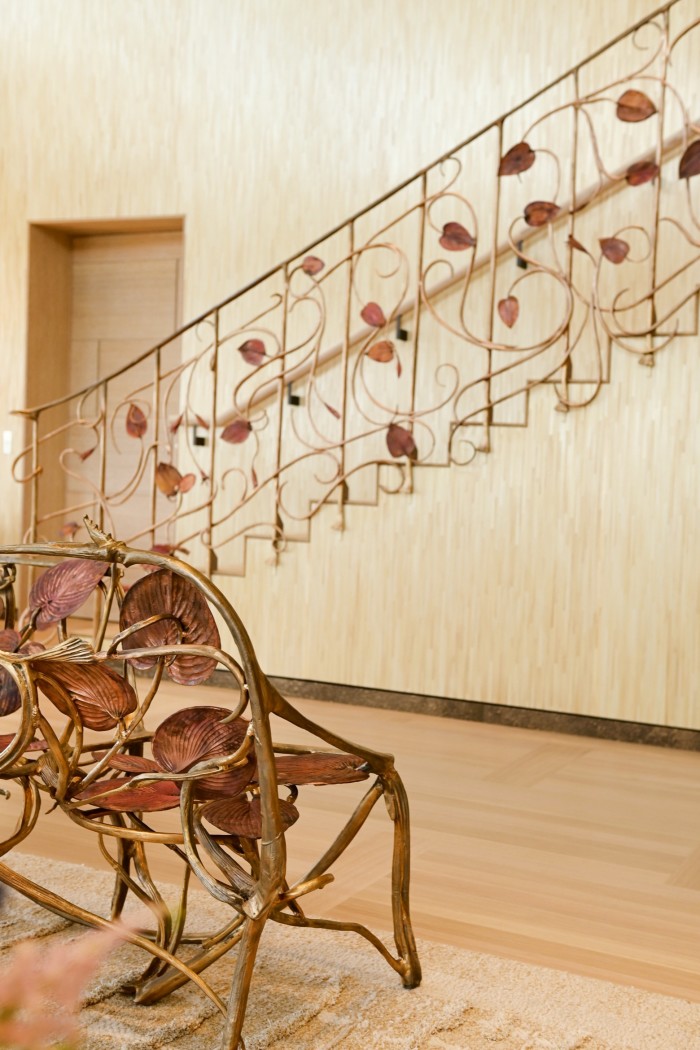
It also illustrates quite deftly the sweep of Arnault’s power. To the left is the Louis Vuitton headquarters, the house which contributes the majority share of the group’s revenues, reported to be €44.7bn in 2020. Earlier this year, Arnault’s personal fortune was estimated to be $194bn, a number that has since grown bigger to earn him the sometime title of richest human in the world. To the right is the Louvre, the world’s most visited museum, which has been hosting LV fashion shows amid its priceless relics since Nicolas Ghesquière first staged a womenswear collection in the Cour Marly in September 2017. And across the river stand the charred remains of Notre-Dame. In the aftermath of the fire that devastated the cathedral in 2019, Arnault pledged a €200m donation towards its restoration (doubling that pledged by his arch rival, Kering CEO François-Henri Pinault). Just beside Notre-Dame, on the Tribunal de Commerce, a giant advertising hoarding promotes the LVMH-owned Celine.
Aside from being a stunning building, the Samaritaine has become a symbol. It’s a marvel: the art nouveau façades, cast-iron signs and glass-filled atrium that first characterised the department store have been painstakingly restored. It’s a social enterprise: the development also contains 96 low-cost housing units, a nursery and office space that have been built alongside the hotel and store. It’s a place of civic pride: since the reopening, the Samaritaine has seen an average of 35,000 visitors daily walking through its doors. And it’s a morale boost for the city, which, following the Bataclan and Charlie Hebdo massacres, the tumult of the gilets jaunes demonstrations, the Notre Dame catastrophe and 18 months of pandemic, is finally emerging from a long period of disquiet. “It’s a symbol of the reopening of Paris,” says Arnault. “It’s a symbol of a return to normal life.”
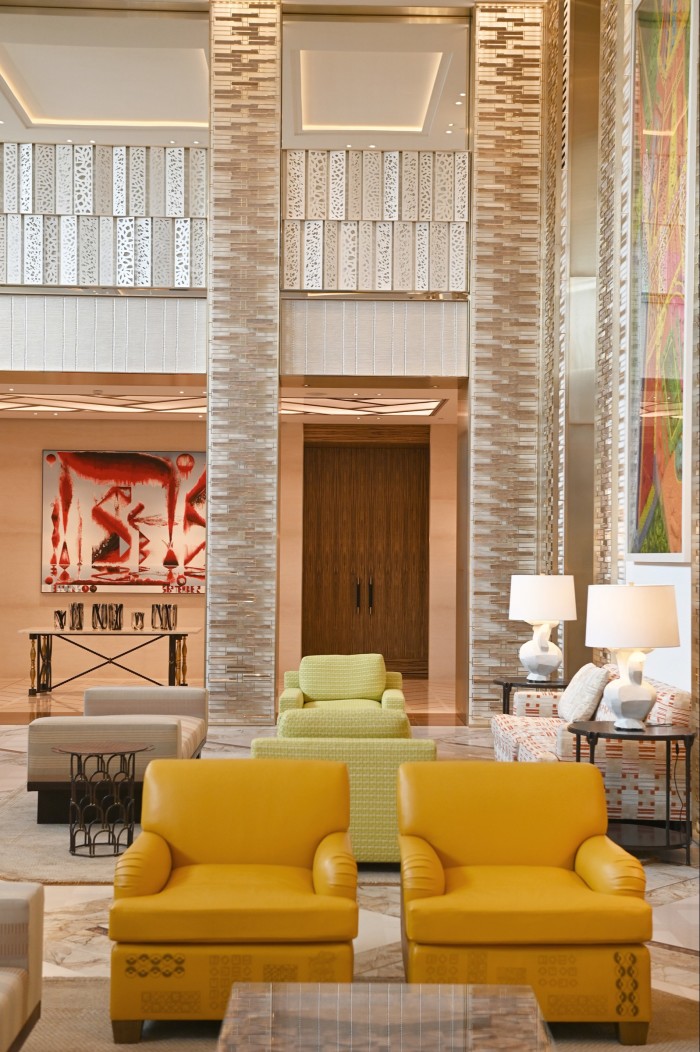
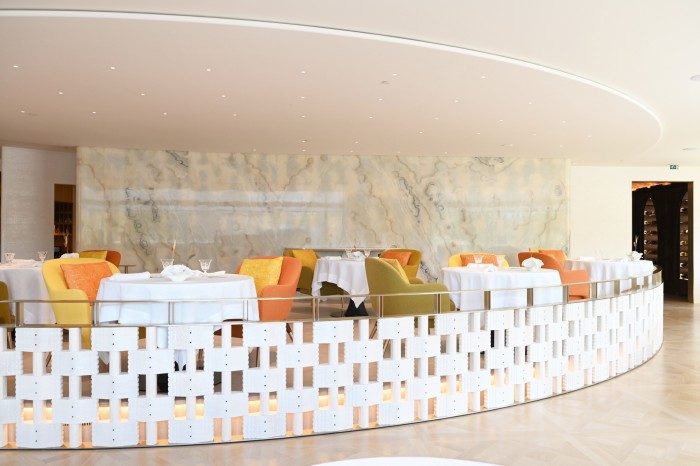
The same observation is made by Olivier Lefebvre, chief executive of the Cheval Blanc group, and as jolly and avuncular as Arnault is cool and lean. “We have had a very nice surprise with the occupancy and in the bookings for the restaurants,” he says as he briskly marches through the Le Tout-Paris restaurant, with its graphic 1980s carpet and Roger Capron coffee tables, along the handcarved, burned, brushed and varnished wall of wine vault inside the Plénitude restaurant and through the warren of beauty treatment rooms, where the scent of Cheval Blanc, a bespoke fragrance made by Dior Parfums, gently mists the air. “The local clientele has been very present as guests, even among those staying at the hotel,” adds Lefebvre. “Overall the market is doing quite well again – Paris has experienced a good return.”
When the project was first conceived, it was probably anticipated that a lot more foreign tourists would be here. I wonder to what extent the pandemic has derailed the plan? “The Americans are coming back gradually, but not the Chinese, not a lot of countries,” says Arnault of the challenges faced by the hospitality industry. “But, you know, tourism is important but you should not overestimate it. When Covid arrived and we saw, for the luxury activities, that the Chinese were not going to travel, we thought it might be difficult. But, in fact, the Chinese started buying in their own country, and we compensated for what we lost on the tourism of people buying in Paris, or for the loss in airport sales.” If the absence of Asian tourists in Europe is a situation, it’s not something that is causing Arnault undue stress. “I don’t think there will be one tourist coming to Paris that will not want to see Samaritaine, both the department store or the hotel,” he says of his expectations for the future. “For 15 years, this plaza was completely empty. Now, you see, it’s full of life.”
Arnault insists on thinking long term about his investments. And shoring up different assets around the world. “We don’t have the constraints of the stock market value every quarter. And it is the same thing for my brands. I always say to people working in the company, you should not look at the profitability. Profitability is a consequence of work done well, and a consequence of desirability of the product. And so too for this project. We were not looking at immediate profitability. We were looking at taking advantage of the beauty of this historic architecture and the fantastic location just in the middle of Paris. Because, you know, a project like this could not have been done by anybody. It took us 15 years of investment, with no profit at that time.”
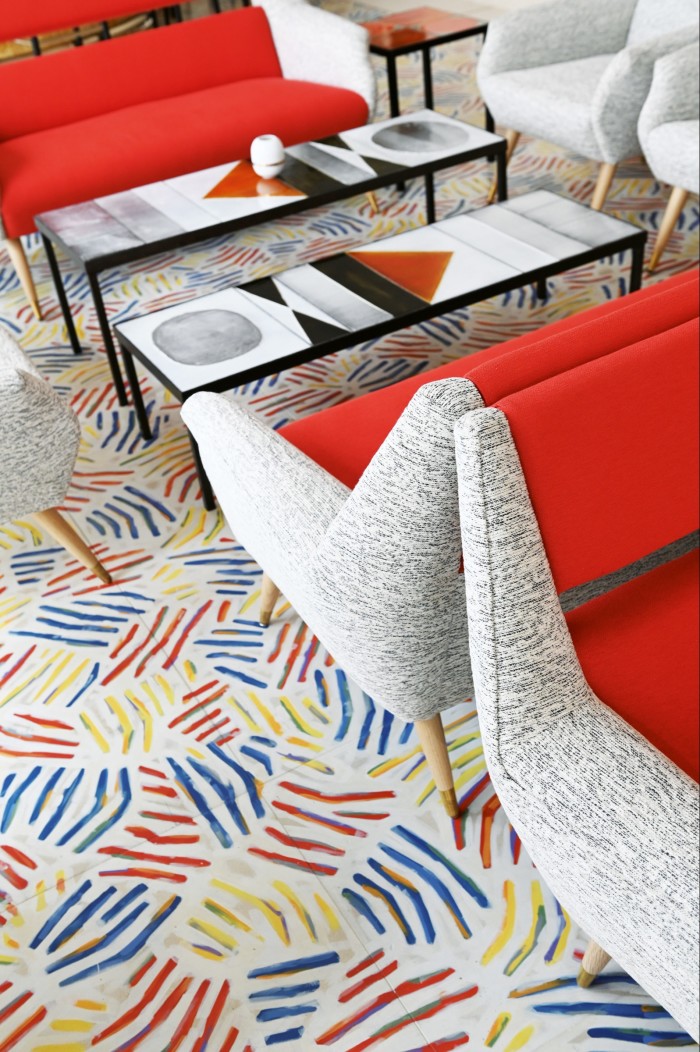
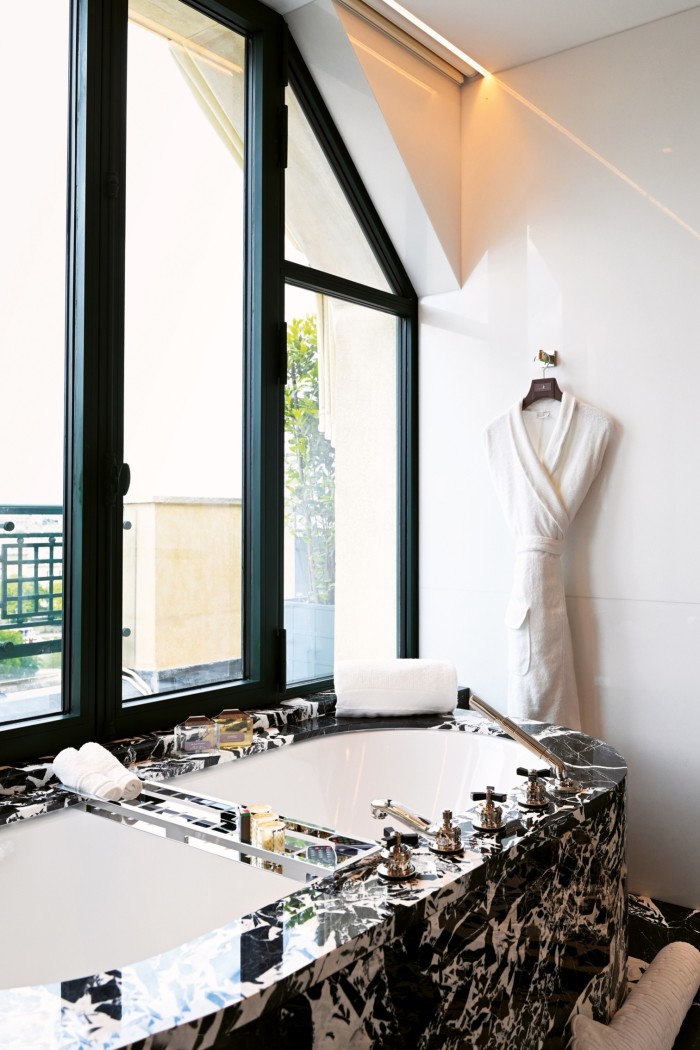
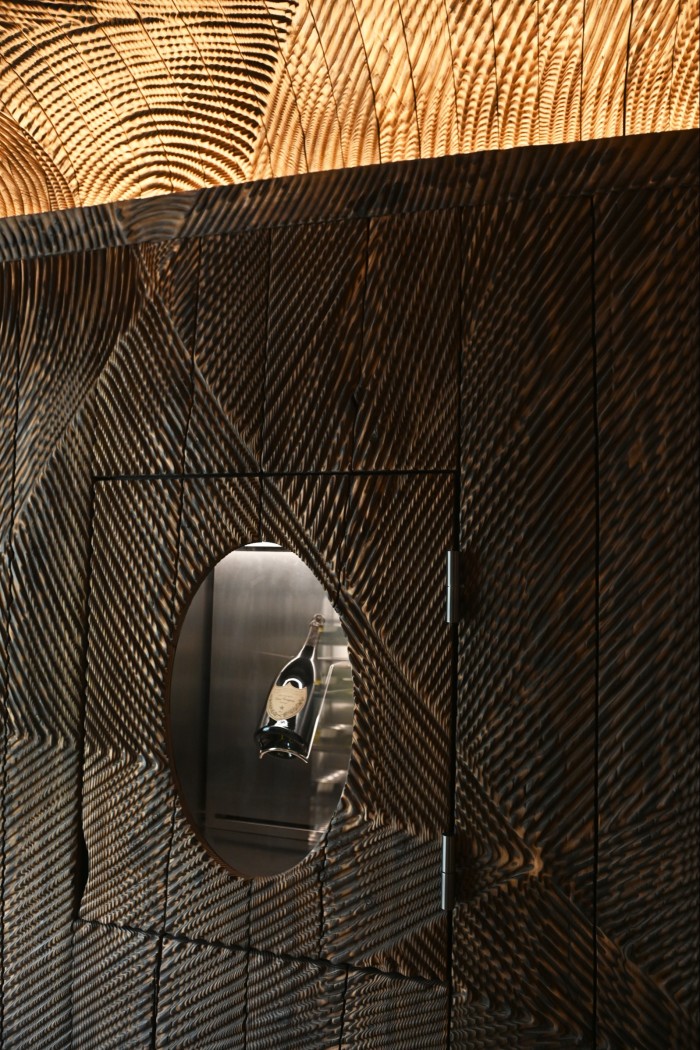
It’s arguable that Covid-19 has done much to rehabilitate Arnault’s reputation. Early on in the pandemic, the group was quick to pivot its resources to help make hand sanitiser where there was a shortfall. He was also instrumental in securing a supply chain through which France could secure more PPE. That the company remains in France, employs some 170,000 people (a number increasing by 10,000 every year, according to Arnault), and manufactures mostly French-made products is something that the country might regard with patriotic pride. “I think people know that the group is good for the country,” says Arnault, who last night had dinner with Sergio Mattarella, the president of Italy, and President Macron. “Good for durability and good for the people. They know the group as a whole is good for France.”
Does he think, as predicted by some financial analysts, we’re about to enter the Roaring Twenties? It would be fitting after all, considering the Samaritaine was the archetypal Twenties building the first time they roared around. “I think there will be a high level of optimism when all this is finished and things return to normal,” replies Arnault. “And there is an appetite for high-quality goods, yes. In perfume, for instance, what is striking is the success of the very special perfume made by Christian Dior. It’s more expensive. It’s more unique. You can personalise your perfume, and the success of it is incredible. And what is interesting, because I was reviewing it only yesterday, is that the clientele is maybe 10 years younger than the clientele for the very famous brands like J’adore or Miss Dior.” He is cautiously optimistic about the future. “I think the world is different,” he continues. “But I think the economy is going to boom.”
In his own life, however, it’s business as usual. Arnault is already focused on a new Cheval Blanc in Beverly Hills, there are meetings with other foreign presidents to schedule, and he longs to travel so that he can check in on his many hundreds of retail points around the world. Being static doesn’t really suit him; he is frustrated by Zoom meetings and he likes to address people face-to-face. It seems ironic that beyond his customary blue Dior suits and shirts with monogrammed initials, one of the chief architects of modern luxury appears to thrive most in the un-luxuriously relentless business of hard work.
His description of the Cheval Blanc brand as a “couture house” leads me to wonder which specific personalisations he might request of his own hotel. His answer is almost disappointingly normal. For all the wealth of services at his disposal, the thing Arnault values most significantly when he travels is some peace and quiet. “And then in the room,” he adds, “I care about the light. Sometimes in the hotel, you switch off the light and you see something blinking. Or a TV or something. I don’t like this.”
It’s a thought you might wish to savour, if you find yourself checking into the Cheval Blanc. Peter Marino may have created the most aspirational of environments. But you probably have Arnault to thank for the bedroom’s blackout switch.
This article has been amended to reflect the correct dimensions of The Apartment
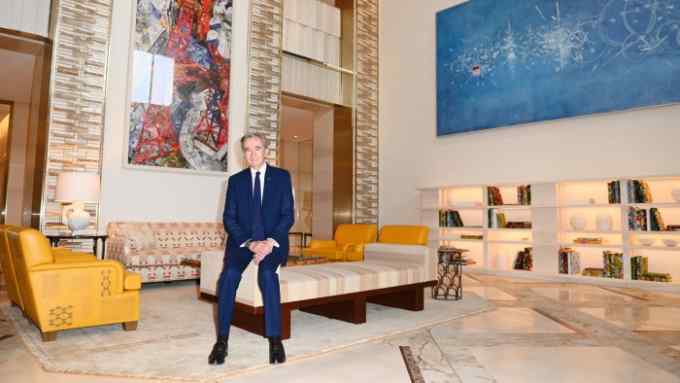
Comments